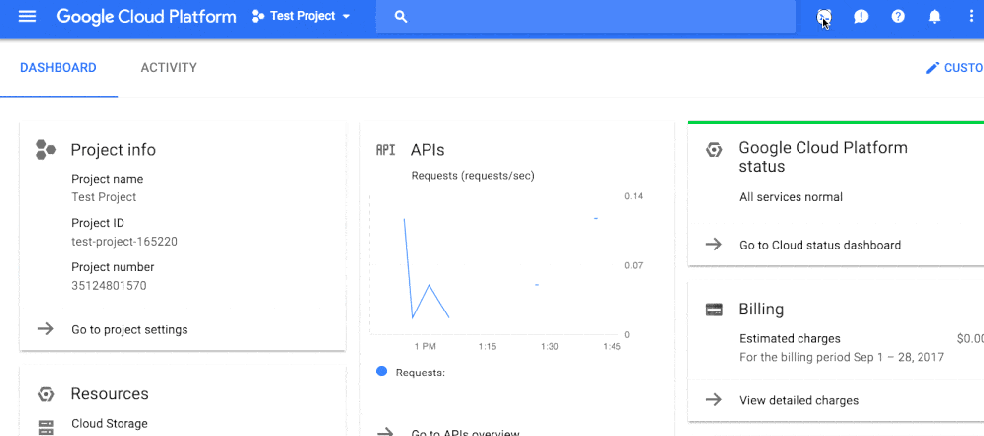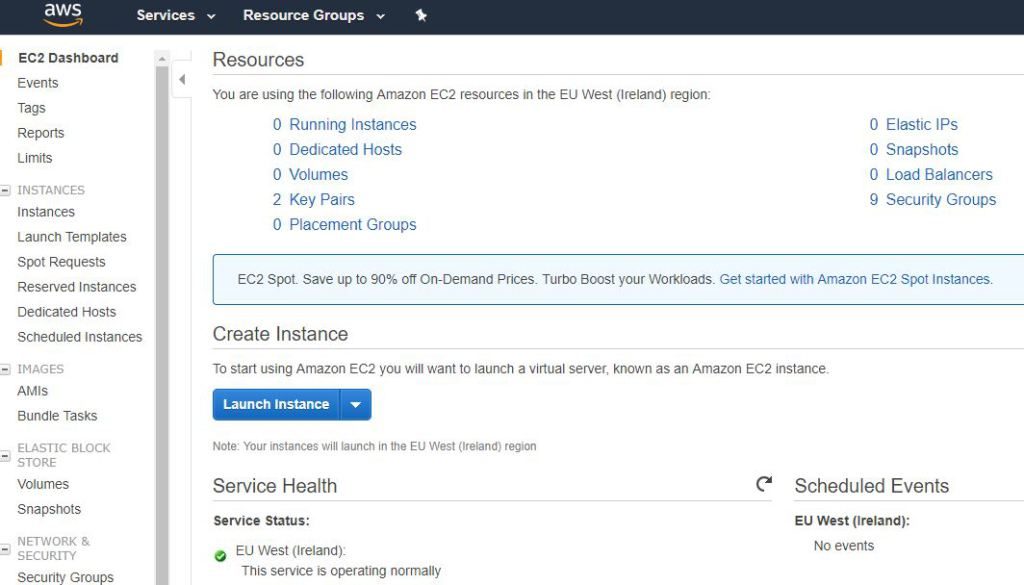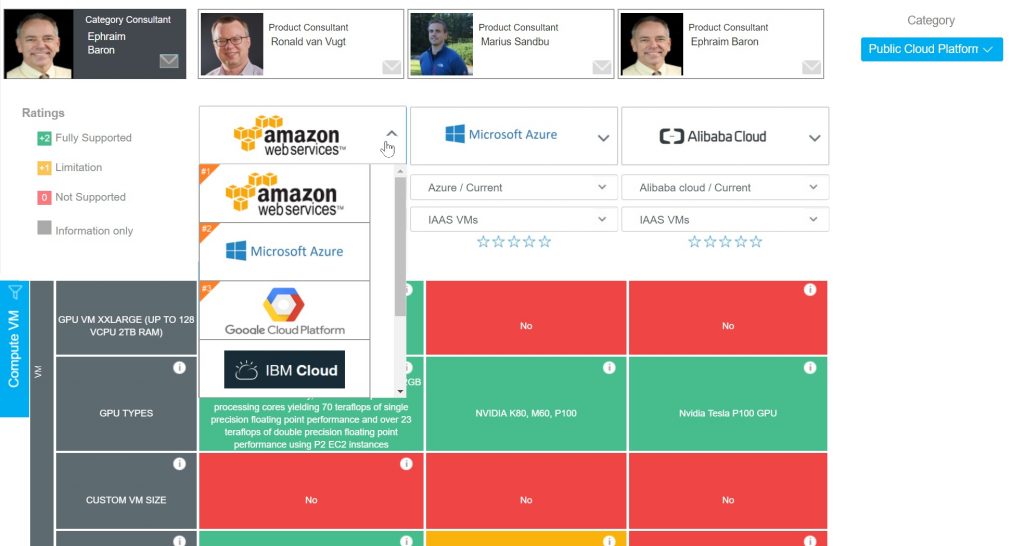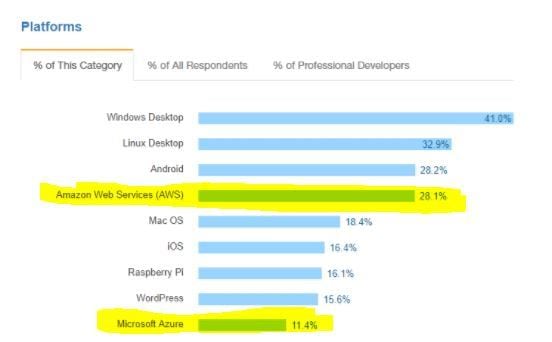2017 was another busy year with less activity than I’d hoped for on my personal blog. Again work took me back and forth between multiple products, platforms and customer cases, from a DevOps project on Azure, to an IoT project on GCP, to a DR solution on IBM and an HPC setup on AWS. So after plunging into most of these platforms I’ve decided to start 2018 with some fresh perspective on the major cloud platforms and analyse their strengths and weaknesses. So this post will reflect my personal experience with the platforms and position some of their core capabilities since the most frequent questions I still get at work are “Where do I start? and “Why should I choose X over Y?”
I like to compare Cloud Platforms to cars. Most of them drive you from place A to B, but all models have different exterior and comfort levels, while some have more seats in the car, others have a faster and stronger engine. The point is that most platforms provide a similar overall service but with varying focus, pricing and options. For instance all four vendors provide a similar form of Cloud orchestration but through different products such as Cloud Deployment Manager, Azure Resource Manager, Cloud Formation and IBM Cloud Schematics, each with varying functionality
So let us start this series with an overview of the four major cloud platform on the market – I will get back into a more technical comparison on part two of this blog series where I’ll focus more on the different aspects of IaaS/Bare-Metal, Identity, PaaS, Bigdata & IoT, ML and Containers. (Also note that I’ve been part of the team that maintains a technical comparison of the major cloud platforms on whatmatrix.com which you can always access here).
IBM Cloud
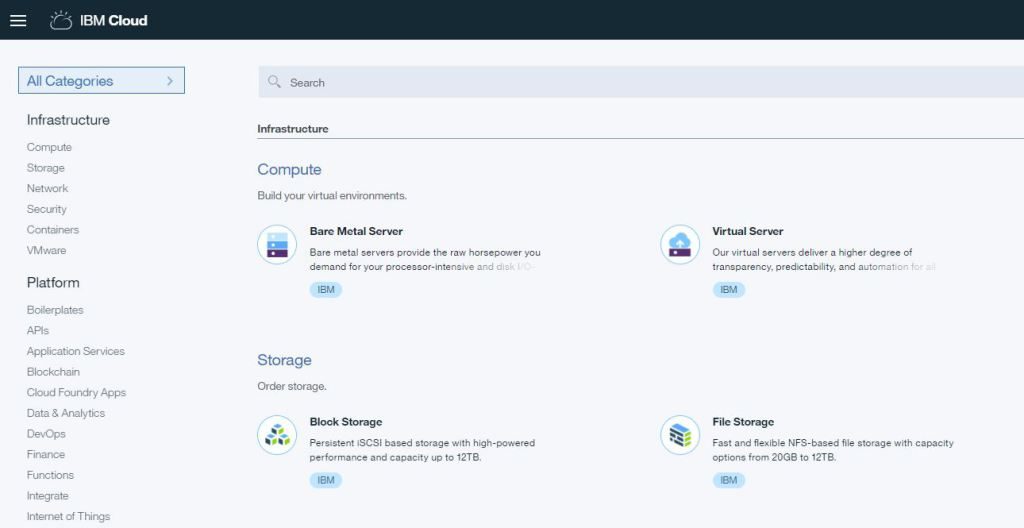
Initially IBM had a strong focus on IaaS services with its Softlayer platform, which has been IBM’s initial public cloud offering (primarily offering Iaas, including bare-metal). On the other hand, IBM has been building up its Bluemix platform in parallel, with a focus on PaaS services based on the CloudFoundry platform. This is also where Watson, the ML/AI cognitive service has its home.
This historic evolution resulted in the problem that Public Cloud on IBM has historically been available on two “separate” platforms with Bluemix and Softlayer (both initially with separate portals, billing etc). IBM has over 50 datacenters in multiple regions and while IaaS is available in all of them, PaaS services are still hosted out of a subset of locations – which has been confusing at times. IBM is now focusing a lot on fully merging these two platforms to provide all cloud functionality from what is now called “IBM Cloud”.
IBM’s underlying orchestration tool for ‘infrastructure as code’ is based upon Terraform and branded as IBM Cloud Automation Manager.
IBM (unlike its competitors) is mostly building its own PaaS services using open-source third party products. For instance the server-less feature in IBM is based on Apache OpenWhisk – unlike e.g. Azure Functions or Amazon’s Lambda and so on … all of which are “closed”/propitiatory approaches.
While playing catch-up with AWS in certain areas like so many others, IBM has been offering fully automated IaaS solutions based on VMware for some time (including Veeam, Zerto, Hytrust and other options) and given their experience with VMware Enterprise environments they have created an offering that can be considered market-leading in the race against AWS.
One of the things I value when working with a platform is the community around it, especially on Stack Overflow and other social media channels such as Twitter and such, unfortunately IBM has the smallest community based upon statistics I’ve seen on Stack Overflow, social media and looking at meetups in the Nordics.
When it comes to PaaS Services even if IBM is focusing a lot on reusing open-source platforms such as CloudFoundry and standardising on Kubernetes, they do not have the same offering capability as others in the market. The core strengths of IBM Cloud that I can see at the moment are the flexible IaaS/Bare-metal and VMware offering that they have. Another strength is the focus on Private Cloud with their IBM Private Cloud solution where they can provide a scaleable PaaS solution for on-premises or hybrid environments.
Google Cloud Platform
To be honest I haven’t done a lot of work on GCP before I started working with it about 1,5 year ago, and what I see is that Google’s cloud platform is pretty similar to their search engine, with a focus on ease of use and speed.
Also in those cases I’ve been working on GCP, it has typically come out as the cheapest option between the four vendors, even though Google seems to offer the fastest (compute, storage, network) infrastructure, but don’t take my word for it, see for yourself –> https://www.cloudbenchmark.com/
Also Google offers the most flexible (virtualized) IaaS , where we can define custom VM instances, any type of disk configuration, with the latest Skylake processors and multiple GPU offerings. So I can easily say that Google has the most impressive core infrastructure. However Google does not have any bare metal offerings such as IBM has with Softlayer, and also compared with Microsoft and IBM, Google has no private cloud offering and have therefore went into a partnership with Nutanix in order to bridge the gap –> https://www.nutanix.com/press-releases/2017/06/28/nutanix-teams-google-cloud-fuse-cloud-environments-enterprise-apps/, they also have limited support and integrations with on-premises infrastructure. Then again this allows them to focus entirely on their public cloud offering.
Google is also missing some of the PaaS services compared to what AWS and Azure are providing. I believe that Google’s strategy is not to provide a bunch of different PaaS services with potential overlap, but to streamline on a few selected core services. Some services that Google provides are quite unique like BigQuery which is one my favourite services! Now I also believe that one of the “weaknesses” that Google currently has, is the ecosystem surrounding it. Many third party companies and vendors have integration or support for AWS and Azure, but not all with Google (and the same goes for IBM).
Google and the community … unlike IBM I see a lot more meetups in the Nordics in particular with focus from many partners but there is little activity on social media.
The last thing I want to mention (since Google is the home of Kubernetes) is the fact that they have the best managed container engine on GCP, but – unlike Azure for instance – they unfortunately don’t have support for other orchestration frameworks such as Swarm or DC/OS as a service. Specifically the release of Azure Container Instances and AWS Fargate have changed the game a little, with increasing focus on containers and now on managing clusters consisting of a set of virtual machines, so I hope that Google will release something new here soon.
Microsoft Azure

So much has happened with Azure over the last year, they announced multiple new regions (which makes Microsoft the one vendor with the most regions, but not the largest) to cover more ground. The announcements at Microsoft Ignite underlined Microsoft’s focus on Azure, and while Azure’s public cloud grows there have been little to no announcements around their classic on-premises / private cloud core products. There is however significant focus on the “hybrid” (Private/Public Cloud) offerings with Azure Stack leading the way.
Microsoft now provides an impressive list of virtual machine instances (however not as flexible and scaleable as the other vendors) and an impressive list of different PaaS services. They have also done a great job on the container management in Azure. Based upon all the announcements from 2017, I believe that Microsoft has done the largest investment into containers & devops features of the four vendors. Microsoft is also building close integrations with their existing products to make it easy for existing customers to move resources to Microsoft Azure going forward. I can also see from the ETL tools they provide that they will make it easy for customers to move and transform data from multiple sources to Microsoft Azure. Lastly Microsoft in my opinion has the best visualization option with PowerBI.
Out of the 4 vendors, I see Microsoft as the one with highest focus on the “regular” Enterprise customer (with on-premises and public cloud requirements), with Azure providing e.g. easy options for delivering backup services for IaaS and on-prem that integrates directly with Hyper-V and VMware, migration tools that make it easy to migrate workloads from on-premises or other cloud providers into Azure, and with all the different integration options into Azure AD. There are also the modern version of RDS, SQL Server with Stretched database and scenarios such as Hybrid Active Directory, that make Azure a strong contender in the hybrid cloud market, both for pure IaaS as well as Big Data and Identity options. Lastly Microsoft has also released Azure Stack where they try to bring the Azure ecosystem to on-premises workloads, which could make Azure an even more logical choice for customers wanting to move to the public cloud.
One of the downsides with Azure is that performance is not one of their strength for all offerings, and there are also limitations with certain IaaS offerings that make it difficult at times. Maybe they they are focusing too much on adding new services and value that they are forgetting to focus on the underlying platform itself.
Amazon Web Services
Amazon is the market leader when it comes to public cloud. They might not have the most regions (best global coverage), but they have the largest market share. Looking at the technical capabilities and the PaaS ecosystem Amazon has established, most of the others are realistically nowhere near this. Looking at offerings like Amazon RDS and Amazon S3 makes you realize how fundamental these services have become and having customers such as Netflix officially using their cloud platform is a pretty good statement of their status.
Another important aspect of the Amazon ecosystem is the community around it. The number of user-group meetups and different communities on AWS is huge! And I should not forget to mention that Amazon is ranked the market leader in IaaS based on WhatMatrix’s analysis as well as other analysts and communities. It is also a safe bet that most third party vendors (if they support any form of “cloud”) offer integration with AWS.
One of the things I’ve also noticed at Re:Invent is the high focus on DevOps and Containers with support for Kubernetes and AWS Fargate (which is focusing on container instances instead of a managed container clusters) but also on the partnership with VMware which will now allow customers to provision VMware ESXi hosts running on AWS infrastructure (combining the market leader in private cloud and public clouds) which is a strong statement when it comes to hybrid cloud. Still a bit behind IBM especially on the VMware support and worldwide availability. Increasing focus can also be seen on machine learning capabilities and media services (which are historically areas where Azure had the upper hand on).
One of the downsides of AWS so far has been the lack of appetite for hybrid or private clouds and only some limited offerings exist for on-prem solutions (e.g. like AWSs storage gateway)
Other ramblings
So that was a short introduction to some of the core capabilities and differentiators of these four vendors. Looking at the ecosystems and communities around them there is no denying that the AWS pulls the largest interest. This is just a screenshot from the Stack Overflow developer report from last year. Showing AWS and Azure in the top 10 of categories on questions asked.
The same goes for threads on Reddit, seems like there is a lot more activity focused on AWS then on the other providers overall.
In this first article of the series I have focused a lot on the IaaS and PaaS capabilities of the cloud providers. There is also no denying that there is a multitude of other critical areas and even more emerging battle fronts in the Cloud Wars that can significantly shift the current cloud ecosystem and its leaders. The power of seamlessly integrating and accessing the cloud with other SaaS offerings through consistent identity and access control is something that Microsoft and Google especially are good that (having one account to access mail, office tools and the respective Cloud Platform can be very powerful). But this is arguably just the beginning and the battles have just began for e.g. machine learning, AI, blockchain, quantum computing etc … .
So this has been a somewhat short introduction to the Public cloud vendors and some of my experience with them, I would love to hear what your own experiences with these platforms are and how they match up with my evaluation. The next blog in the series will provide more in-depth information on IaaS and will look in a bit more detail into the differences between the vendors.
Marius Sandbu – WhatMatrix Category and Product Consultant
Marius is a Lead Category consultant in the WhatMatrix community – visit the public cloud comparison here
Visit his personal blog here: http://msandbu.org/

Marius Sandbu

Latest posts by Marius Sandbu (see all)
- Cloud Wars IBM vs Microsoft vs Amazon vs Google – Part 1 Overview - January 12, 2018



